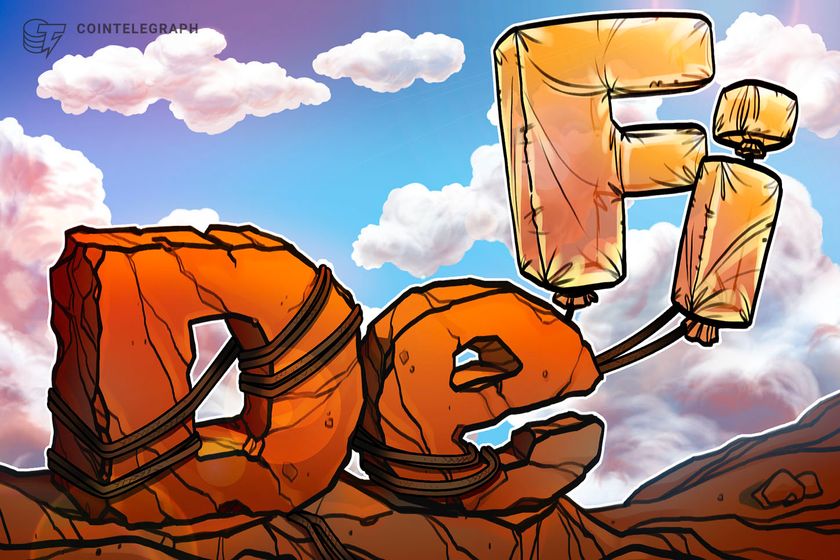Polygon CEO Urges DeFi to Move Beyond Hype and Embrace Sustainable Liquidity Models

In a recent interview, Polygon Labs CEO Marc Boiron delivered a stark warning to the decentralized finance (DeFi) sector: the current liquidity crisis is “self-inflicted,” and the industry must shift from short-term hype to sustainable models. With DeFi total value locked (TVL) still below its 2021 peak despite recent market recovery, Boiron’s comments come at a critical juncture for the industry.
The Problem With Mercenary Capital in DeFi
Boiron pulled no punches in his critique of current DeFi practices, particularly the reliance on what he calls “mercenary capital” – liquidity that chases the highest yields without long-term commitment to protocols. This phenomenon has created a vicious cycle where:
- Protocols offer unsustainable APYs through token emissions
- Yield farmers flood in temporarily
- Liquidity disappears when yields drop or token prices fall
- Protocols are forced to emit more tokens to attract new liquidity
“It’s just renting liquidity; it’s not real loyalty,” Boiron told Cointelegraph. This model, while effective in the short term, ultimately dilutes token value and creates systemic instability that deters institutional adoption.
Polygon’s Vision for Sustainable DeFi
Boiron outlined Polygon’s alternative approach centered on three key pillars:
1. Chain-Owned Liquidity
Rather than relying on external liquidity providers, protocols should build treasuries to directly own liquidity positions. Polygon’s POL token serves as a blueprint for this model, where:
- Protocols earn yield from their treasury positions
- Value accrues back to the protocol rather than temporary LPs
- Long-term stability replaces short-term liquidity spikes
“Protocols can put their treasury to work, earning yield instead of diluting token value. Over time, this strengthens the treasury rather than just paying off temporary liquidity providers.”
2. Transparent Economic Models
Boiron emphasized the need for clear, sustainable tokenomics that prioritize fundamentals over hype. The POL model demonstrates how protocols can:
- Use captured fees to build treasury reserves
- Implement bond mechanisms for controlled growth
- Limit emissions to prevent excessive dilution
The trade-off? Time and discipline. Building sustainable liquidity requires patience rather than quick fixes.
3. Institutional-Grade Stability
For traditional finance to fully embrace DeFi, protocols must offer:
- Predictable liquidity conditions
- Minimal slippage volatility
- Reliable market access
“Traditional finance runs on models that need stable, reliable market access. If a DeFi protocol suddenly loses liquidity or slippage spikes, it creates a level of risk most institutions just won’t take.”
The Road Ahead for DeFi Adoption
Boiron sees several key developments on the horizon:
Regulatory Clarity
With frameworks like Europe’s MiCA regulation and evolving US guidance, Boiron predicts:
- 12-18 month timeline for significant institutional involvement
- Greater alignment between DeFi and traditional compliance standards
- More sophisticated financial products bridging TradFi and RWAs
Ecosystem Maturation
By 2026, Boiron envisions a DeFi landscape with:
- Reduced volatility through sustainable models
- Stronger community governance mechanisms
- Less reliance on mercenary capital
- True decentralization through protocols like POL
Why Sustainability Wins in the Long Run
Boiron’s message to DeFi builders is unequivocal: “Sustainable economics always win in the long run.” While the temptation to chase short-term gains through high APYs remains strong, history shows that protocols prioritizing fundamentals outlast their hype-driven counterparts.
The POL token exemplifies this philosophy by:
- Providing protocols with financial breathing room
- Enabling focus on product development rather than liquidity plugging
- Supporting long-term user retention strategies
“POL doesn’t solve everything on its own, but it gives protocols the breathing room to tackle bigger challenges like user retention and capital inflows the right way.”
As more teams recognize the value of sustainable models, Boiron believes the industry is approaching an inflection point. The protocols that survive the next market cycle will likely be those that heed his warning and build for longevity rather than fleeting buzz.
Actionable Takeaways for DeFi Projects
For protocols looking to implement sustainable liquidity strategies:
- Audit your tokenomics: Identify dependencies on mercenary capital
- Develop treasury strategies: Explore chain-owned liquidity options
- Balance growth and sustainability: Find the right emission rates
- Plan for institutional needs: Ensure liquidity stability
- Learn from survivors: Study protocols that weathered past cycles
The path to sustainable DeFi won’t be easy, but as Boiron’s analysis makes clear, it’s the only path that leads to lasting success in the sector. The question now is how many protocols will make the shift before the next liquidity crisis hits.

